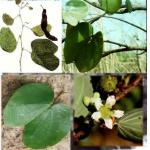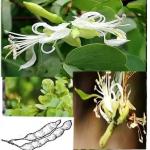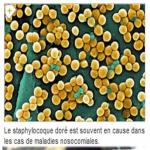Endometriosis Definition Causes Symptoms Natural Treatment
Endometriosis Definition Causes Symptoms Symptoms Treatment Natural
Endometriosis Treatment
Endometrium
The endometrium is the tissue lining the inner wall of the uterus. This tissue plays an important role in a woman's menstrual cycle. The endometrium is expelled every month during menstruation. Each month it thickens rapidly in anticipation of pregnancy, and if pregnancy does not occur, excess endometrial tissue is then expelled during menstruation. This is a natural process that takes place in women from puberty to menopause. The slightest problem at this level has a positive or negative impact on a woman's fertility. No endometrium by ruler and not fertilized. Moreover, if the endometrial tissue appears in the wrong place, it creates a pathology called endometriosis.
Definition of Endometriosis or Adenomyosis
The endometrium or endometrial cell then forms the inner wall of the uterus. Now instead of remaining in their place, the endometrial cells migrate and settle in unsuitable places. Thus the endometrium is found on the ovaries, the colon, the rectum, the fallopian tubes, the ligaments supporting the uterus, etc... This endometrial tissue is subject to the same hormonal variations as the normal endometrium, resulting in more or less marked symptoms depending on the time of the cycle. The forms also vary from one woman to another and evolve over time, which is why it is important to be well accompanied, to limit as much as possible the discomfort and the evolution of the disease.
Uterine adenomyosis or internal endometriosis of the uterus
Uterine adenomyosis is usually defined as endometriosis inside the uterus. In fact it is an anomaly of the junction zone between the endometrium (the mucous membrane lining the uterus) and the myometrium (the muscle of the uterine wall) which allows endometrial cells to infiltrate the myometrium. Thus adenomyosis should not be confused with endometriosis, which is an endometriosis located in the myometrium, the muscle of the inner wall of the uterus.
Description of Endometriosis and Natural Treatment
As explained above, in endometriosis, some of these endometrial cells spread outside the uterus, usually to other parts of the abdomen. These cells react to female hormones in the same way as those in the endometrium. Each month, the tissue thickens, breaks down and is expelled.
Unlike the cells lining the lining of the uterus, the blood and tissue in the abdomen cannot find a way out of the body. The endometrial cells remain blocked and search in vain for an escape route. They then adhere to other tissues and sometimes begin to divide and multiply. Sometimes they invade other tissues or form filaments that connect certain organs together. They can make scar tissue, which sometimes causes pain. Sometimes endometrial cells form a cyst that can burst and bleed.
This process is similar to a cancer without being a cancer because endometriosis is not a cancerous condition. However, it can increase the risk of developing ovarian cancer. Endometriosis is not a fatal disease. About 5% to 10% of women of childbearing age suffer from endometriosis. About a quarter to half of infertile women suffer from it.
Causes of Endometriosis or Adenomyosis
The causes of endometriosis remain unknown. Various theories have been developed to explain endometriosis. Most of them use the concept of retrograde flow. During menstruation, the upper layers of the endometrium detach and are normally excreted from the body. Tissue and blood are expelled by muscle contractions. In some cases, however, the flow is reversed and goes from the fallopian tubes to the ovaries. This is how endometrial cells could reach the ovaries and the pelvic cavity from outside the uterus.
However, retrograde flow does not explain everything, as it often occurs in women who do not suffer from endometriosis. Another theory is based on disorders of the immune system. According to this theory, the body is unable to locate and destroy the endometrial tissue outside the uterus. There are significant differences in the immune system of women with endometriosis, but their significance is still unknown.
Endometriosis may have a genetic component. The daughters and sisters of women who suffer from endometriosis have a slightly increased risk of developing the condition.
Other theories include spread through the blood or lymphatic vessels and also the possibility that healthy tissue lining the abdominal cavity may become endometrial tissue.
THE SEVERITY OF ENDOMETRIOSIS
The degrees of severity of endometriosis vary. This disorder generally tends to worsen over time if left untreated, but the first consequence and interfertility.
On the other hand, 2 situations have the effect of reducing its symptoms: menopause, which usually provides definitive relief, and pregnancy, which provides temporary relief.
The main risk associated with endometriosis is infertility. About one in three women who have difficulty becoming pregnant suffer from endometriosis. Moreover, endometriosis is often diagnosed during exploratory tests (by laparoscopy) carried out because of infertility problems.
Adhesions of endometrial tissue can reduce fertility by preventing the release of the egg or by hindering its passage to the uterus through the fallopian tubes. However, it is still observed that 90% of women with mild to moderate endometriosis manage to become pregnant within 5 years. However, as time passes, fertility is more likely to be compromised. Therefore, it is best not to delay a desired pregnancy.
CHARACTERISTICS OF ENDOMETRIOSIS
Endometriosis is characterised by deposits of uterine lining outside the uterus (on the ovaries, intestines or bladder). This lining starts bleeding at the time of menstruation. The bleeding, which cannot drain off naturally, causes lesions and small cysts. These cysts grow larger and become painful.
This pathology is called "hormone-dependent". The pain and other symptoms are stronger during the menstrual period and disappear with the menopause.
Recommendations on the subject of Natural Treatment Endometriosis
Please read the whole page while clicking on the coloured words to go further. Please click on all links. A link contains valuable information such as a recipe, a coupon code or other useful information. Click on the links while remaining on the page. Please be sure to return to the page.
SYMPTOMS AND COMPLICATIONS
- Symptoms of endometriosis
- Pelvic pain ;
- Pain during sexual intercourse;
- Menstrual changes;
- Pain and cramping during menstruation;
- Painful urination or defecation during menstruation;
- Infertility.
Sometimes the risk of miscarriage in pregnant women.
Our contacts: France 0033755786197, 0033752949621, 0033753897969 Cameroon 0023795735357 Gabon 0024177855621 USA 0013473235898 Benin 0022997918990
Other Symptoms of Endometriosis and Natural Treatment of Endometriosis
Many of these symptoms are also associated with other medical conditions. The severity of the symptom is not necessarily related to the amount of tissue outside the uterus. Some women who suffer from endometriosis in the whole pelvis experience no particular sensation, while others who have the disorder in a very circumscribed area experience excruciating pain.
Menstrual pain that has been bearable for years, but which increases in intensity, can be a sign of endometriosis.
Sometimes cysts and scar tissue form around the vagina in the pelvis, making sexual intercourse painful. This pain sometimes indicates a case of endometriosis, but this symptom can also be caused by other conditions. In women with endometriosis, the endometrial tissue often ends up in one or both ovaries. This can lead to the formation of cysts called endometriomas.
Please visit
Please share the page at the bottom of the article. Don't forget to leave us a comment. We will be very happy to read you and answer you. Your comments help us to do better. All our contacts are at the bottom after the share icons. Thank you for helping us and may God bless you.
Natural Treatment Endometriosis Natural Remedy Adenomyosis
Endometriosis can be treated with drugs or herbal medicine. The choice of treatment depends on the individual and a number of factors including the woman's age, the severity of her symptoms and whether she wants to have children.
Herbal tea 092 is a good natural remedy for endometriosis or adenomyosis.
Please reach us at http://wa.me//+22967546677
Please discoverherbal tea 17, Herbal tea 18, Herbal tea 19
Please reach us at http://wa.me//+22967546677
Click below to order clove oil
Book an appointment with lady feranmi on
Add a comment








